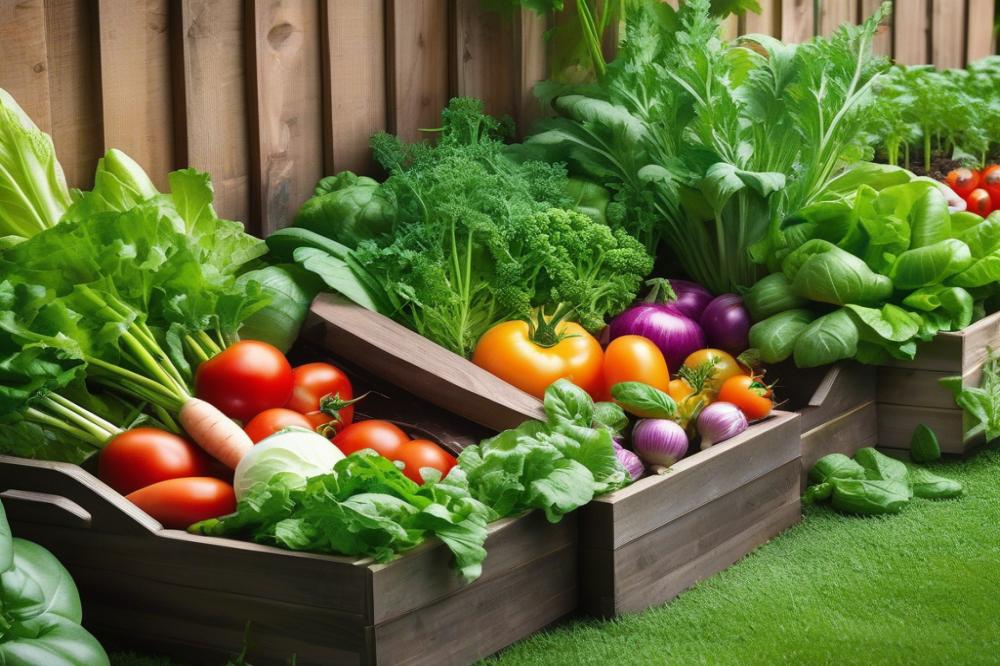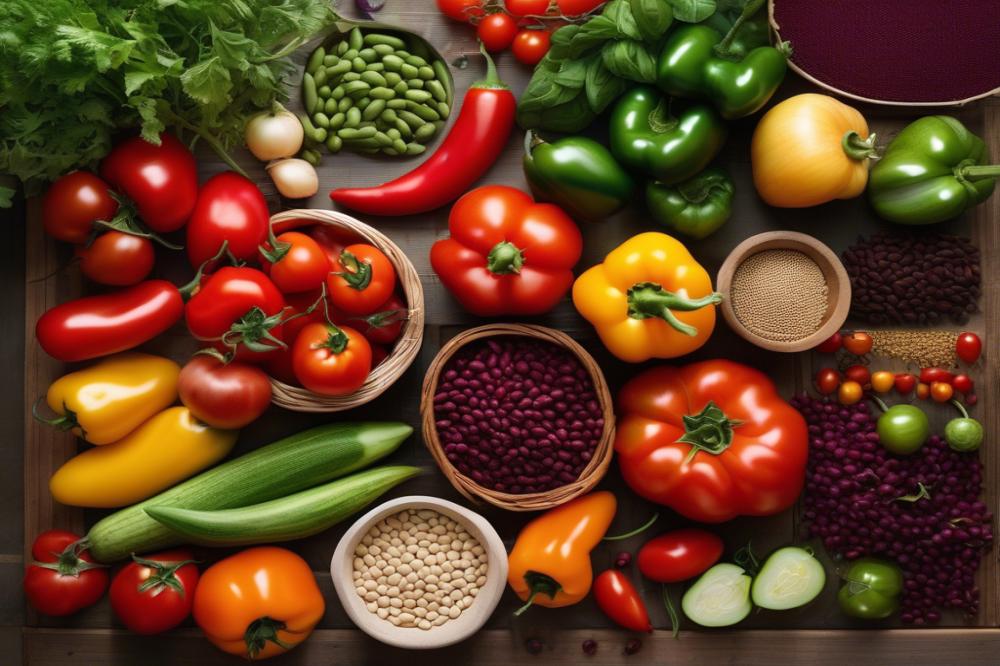The Benefits of Growing grafted tomato plants
grafted tomato plants represent an innovative approach to gardening that combines different varieties for a stronger, more productive end result. This unique method connects a desirable tomato variety to a robust rootstock. The integration of these two components offers advantages that many home gardeners cherish. With gardening becoming more popular, understanding these benefits can greatly enhance one’s gardening experience.
The significance of grafted varieties lies not only in their improved yield but also in their disease resistance. Gardeners often struggle with pests and infections that can devastate crops. By selecting the right rootstock, one can boost the plant’s ability to fend off these challenges. Enhanced pest resistance creates a more sustainable gardening environment. It can reduce the need for chemical treatments, making gardening safer for families and pets.
In addition to resilience against disease, grafted plants also demonstrate an impressive capacity for soil adaptation. Different tomato varieties thrive under various soil conditions. Selecting the appropriate rootstock allows for better performance, regardless of the environment. This adaptability ensures that gardeners can grow tomatoes in different climates and soil types, easily adjusting their approach as needed.
Another significant advantage lies in growth efficiency. When tomato plants grow more effectively, they produce higher yields in less time. This feature is particularly appealing for those who prioritize productivity in their home gardens. Heirloom tomatoes, known for their exceptional flavor, can also be grafted, letting gardeners enjoy beloved varieties without sacrificing robustness.
Lastly, grasping the benefits of grafting enriches the knowledge of any gardener. It doesn’t just pertain to practical gardening tips; it also fosters confidence in managing plants. As gardeners become aware of the advantages, they can create thriving gardens. The interplay of different varieties gives each gardener a chance to find success in ways they might not have considered before.
Understanding Grafted Tomato Plants


Tomato cultivation has evolved with techniques that make growing easier and more successful. Grafting is one such method. It involves joining the top part of one plant, known as the scion, to the root system of another plant, referred to as the rootstock. This process allows the combined plant to benefit from the strengths of both parts.
The role of rootstock is vital. It provides better disease resistance compared to the standard tomato plants. This means that grafted varieties can withstand challenges like soil-borne pests and various diseases. Additionally, rootstock can enhance growth efficiency, allowing the plants to thrive even in less-than-ideal conditions. Notably, this adaptation helps the plants utilize nutrients and water more effectively.
Many tomato varieties have been developed through grafting. Popular options include several heirloom tomatoes, which many gardeners cherish for their rich flavors. Varieties like ‘Brandywine’ and ‘Cherokee Purple’ are often grafted to improve their hardiness and yield. These selections not only taste fantastic but also stand up well against environmental stresses. Such attributes make them favorites among sustainable gardening enthusiasts.
When considering gardening tips for grafted tomatoes, pay attention to soil type and care techniques. Grafted varieties can adapt to different soil conditions, which helps them thrive. Choosing the right rootstock for specific soil types can lead to stronger plants. This approach maximizes the benefits, like improved yield and pest resistance.
In summary, grafting offers a unique solution for tomato growers. By understanding the principles of grafting, gardeners can enjoy more resilient plants. Exploring various grafted tomato varieties provides a pathway to gardening success, allowing for delicious harvests year after year.
Enhanced Disease Resistance


Tomatoes are delicious, but many gardeners face challenges with common diseases. Problems like blight, wilt, and mosaic virus can impact yield significantly. Even the most careful gardeners may struggle to keep these issues at bay. Their spread often puts a damper on both enjoyment and production. Understanding these diseases is the first step in creating a successful garden.
When farmers use grafted plants, they gain an edge. This process involves combining a hardier rootstock with desirable tomato varieties. The rootstock is chosen specifically for its disease resistance. It anchors the plant while providing strength and stability. This unique pairing allows the plant to cope better with various soil issues and diseases.
One of the major benefits of disease resistance is improved yield. Healthy plants produce larger and more abundant fruits. By resisting diseases, grafted plants also require fewer chemical interventions. This reduces the environmental impact of gardening practices. Such an approach promotes sustainable gardening, an approach more gardeners are seeking. They want to grow their food while being kind to the Earth.
In addition to disease resistance, there are other benefits. Grafted plants often show better adaptability to different soil types. Many times, they also exhibit enhanced pest resistance. This resilience contributes to overall growth efficiency, which is a big deal for anyone looking for gardening tips. Heirloom tomatoes, when grafted, can thrive and provide a unique flavor for your meals. Choosing the right combination of varieties can yield impressive results.
In summary, understanding disease issues can empower gardeners. With grafted plants, overcoming these challenges becomes more achievable. The promise of a fruitful harvest awaits those who explore the benefits of this gardening technique. By selecting robust rootstock and focusing on strong varieties, gardeners can enjoy healthier plants with richer yields.
Improved Yield and Growth Efficiency


When comparing yields, grafted tomato plants often outperform their non-grafted counterparts. Studies indicate that grafting can lead to a harvest increase of up to 20% or more. This boost comes from the rootstock, which is selected for traits like disease resistance and robust root development. Non-grafted varieties may struggle more with environmental stressors. Grafted plants demonstrate enhanced growth efficiency, allowing them to thrive in conditions where others may fail.
Several factors contribute to this improved efficiency. Rootstocks are chosen based on their ability to adapt to different soil types. These selections can handle varying pH levels and nutrient availability better than regular tomato plants. Furthermore, the combination of root systems often improves pest resistance. This resistance reduces the need for chemical treatments, making gardening more sustainable. Additionally, grafting can enhance water uptake, ensuring tomatoes receive adequate hydration.
Gardening Tips for Maximizing Yield with Grafted Plants
To maximize yield with grafted varieties, starting with strong plants is vital. Choose reputable sources for your heirloom tomatoes and ensure they are from established nurseries. Space the plants appropriately to encourage airflow and reduce disease pressure. Consider soil quality, as nutrients play a significant role in growth. Amending the soil with organic matter can improve its overall condition.
Regular watering practices are important, especially during dry spells. Deep watering encourages root systems to grow downward, making them more resilient. Applying mulch can help retain moisture and regulate soil temperature. Additionally, practice crop rotation to avoid the buildup of pathogens in the soil. Be mindful of plant placement to maximize sunlight exposure. This sunlight is crucial for optimal fruit development.
Soil Adaptation and Pest Resistance
The selection of the right rootstock is crucial for growing tomatoes effectively in various soil conditions. Different rootstocks have distinct traits that allow them to thrive in specific types of soil. For instance, certain rootstocks can tolerate saline conditions while others may excel in compacted or sandy soils. This adaptability can be a game changer for gardeners, especially those with challenging soil types.
Disease resistance is one of the key benefits provided by grafted plants. Many modern rootstocks have been developed to withstand common soil-borne diseases. This resistance not only protects the plants but can also increase overall growth efficiency. Grafted varieties often display improved yield, assuring farmers that their efforts are not in vain.
When it comes to pest resistance, some grafted tomatoes are bred with traits that deter harmful insects. Rootstocks with natural barriers can reduce the chances of infestations. These benefits become vital when considering sustainable gardening practices. Choosing grafted varieties specifically for their pest-resistant traits can help reduce the need for chemical pesticides.
Recommendations for Selecting Grafted Plants
Consider local soil types when selecting the right grafted plants. Heirloom tomatoes may provide great flavor but could require more care if they aren’t suited to your soil. Researching native soil conditions can guide you in choosing rootstocks that offer the best adaptability. Not all tomato varieties are equal; some will fare better than others depending on the local environment.
Utilizing gardening tips focused on soil health is also beneficial. Proper amendments, like organic matter, can improve soil quality, making it easier for grafted plants to thrive. This practice is important for ensuring that plants grow strong roots, which are essential for water and nutrient uptake. By choosing the correct rootstock, you’ll enhance your garden’s resilience to both pests and diseases.
Choosing the Right Grafted Tomato Varieties
Selecting the perfect grafted tomato varieties involves understanding your gardening goals. Different varieties are available to meet unique needs. If disease resistance is a priority, look for those bred specifically for that purpose. Improved yield is another attractive feature in certain grafted options. These plants can produce more fruit than their non-grafted counterparts.
When evaluating options, consider the type of rootstock used. Some rootstocks enhance growth efficiency and adaptability to various soils. This can be crucial for gardeners facing challenges with soil conditions. Pest resistance is also an important factor. A good rootstock can help fend off many pests, leading to more successful harvests.
Balancing Heirloom Tomatoes with Grafted Options
Heirloom tomatoes bring unique flavors and colors to the table. Many gardeners cherish these varieties for their taste. However, they often lack the resilience found in grafted plants. A good approach involves balancing these heirlooms with grafted selections. This way, you can enjoy the best of both worlds: rich flavors alongside improved hardiness.
In sustainable gardening, incorporating both types can be beneficial. Each variety has its strengths. By utilizing grafted plants for their reliability, you can also plant heirloom types for culinary enjoyment. This combination allows for diverse harvests while still maintaining an environmentally friendly garden.
Factors to Consider
Several factors help shape your choice of grafted tomato varieties. Climate plays a significant role. If you live in a region with high humidity, seek varieties known for their disease resistance. Taste preferences matter, too. Some people love the sweetness of cherry tomatoes while others prefer the classic beefsteak.
Intended use is also critical in the selection process. Will you be making sauces, eating fresh salads, or canning? Each purpose may steer you toward different tomato varieties. Matching your preferences with the right grafted options can create a rewarding gardening experience.
Soil adaptation is another aspect that shouldn’t be ignored. Different varieties thrive in different soil types. Testing your soil can provide insights into which grafted plants will perform best. Use gardening tips focused on your local conditions. This increases the likelihood of a bountiful harvest.
Wrapping Up the Benefits of Grafted Plants
Growing grafted tomato plants presents several clear advantages for gardeners. They often offer enhanced disease resistance, which can lead to healthier plants and better quality fruit. Many gardeners notice an improved yield, allowing them to harvest more tomatoes than from non-grafted varieties. This can make a significant difference, especially for those who grow these vegetables for market or personal use.
Consideration of grafted options should be part of your gardening journey. These plants can thrive in various conditions, adapting to different soils and climates. When you select grafted varieties, you are making an informed choice that can greatly elevate your gardening results. The effort spent in learning about these plants pays off with bountiful harvests and resilient crops.
Education plays a crucial role in sustainable gardening practices. Understanding the benefits of grafting encourages thoughtful decisions. It’s important to stay curious and seek knowledge. The more you learn, the better equipped you become to make choices that benefit not only your garden but also the environment. Grafting is just one aspect of a larger story in gardening, and being proactive in your approach can lead to meaningful change.



